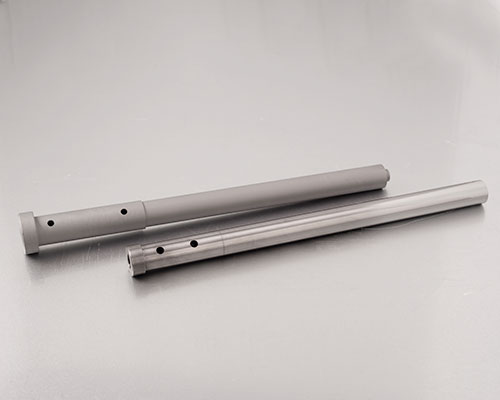The future development trend is tungsten steel world
Tungsten steel, also known as hard alloy, is a sintered composite material consisting of at least one metal carbide. Tungsten carbide, cobalt carbide, niobium carbide, titanium carbide, tantalum carbide are common components of tungsten steel. Carbide components (or phases) typically have grain sizes ranging from 0.2 to 10 microns, and carbide grains are held together using metal binders. Binder usually refers to the metal cobalt (Co), but for some special purposes, nickel (Ni), iron (Fe), or other metals and alloys may also be used. For an undetermined combination of carbide and binder components is called "brand".
Tungsten steel is classified according to ISO standards. This classification is based on the material type of the workpiece (e.g. P, M, K, N, S, H brands). The bonding component is mainly used for its strength and corrosion resistance.
The matrix of tungsten steel is composed of two parts: one is the hardening phase; The other part is bonded metal. Bonded metal is generally iron group metal, commonly used is cobalt, nickel. Hence the tungsten-cobalt, tungsten-nickel, and tungsten-titano-cobalt alloys.
For steels containing tungsten, such as high speed steel and some hot work die steels, the presence of tungsten in the steel significantly improves the hardness and heat resistance of the steel, but decreases the toughness sharply.
The main application of tungsten resources is also hard metal, namely tungsten steel. Hard alloy, known as the teeth of modern industry, tungsten steel products are used to a very wide extent.

The main problems of our hard alloy industry are as follows: first, the enterprise scale is small and the industrial concentration is not high. According to incomplete statistics, 199 cemented carbide enterprises average annual output of 176 tons, average annual output of only 86 tons, annual output of more than 1000 tons of enterprises only 4. Second, less investment in science and technology, lack of high-end technical personnel, technology research and development ability is weak. The investment of our hard alloy industry in science and technology is less than 3% of the sales revenue, the level of science and technology research and development is not high, and the original core technology achievements are few. Third, the product quality level is low, and the product structure needs to be adjusted. China's output of hard alloy accounts for more than 40% of the world's total output, but the sales revenue of hard alloy is less than 20% of the global, mainly due to the high value-added products such as high performance ultrafine alloy, high precision and high performance grinding coating blades, super hard tool materials, complex and different products, precision hard alloy NC cutting tools, and the lack of deep processing supporting facilities and varieties.
With the rapid expansion of China's automobile industry, the demand for cutting tools for auto parts processing is increasing, and the demand for cemented carbide in China's steel, transportation, construction and other fields is also growing. In the strategic prospect of foreign cemented carbide multinational companies, the Chinese market has quietly changed from a supporting role to a leading role.
It is pointed out that by the end of the 12th Five-Year Plan, the output of cemented carbide has reached 30,000 tons and the sales revenue has reached 30 billion yuan. The output of deep-processed products accounts for more than 40% of the total amount of cemented carbide. Exports will double from the 11th Five-Year Plan, aiming to exceed US $1 billion. Hard alloy will develop to the direction of deep processing and tool matching; To the direction of ultra-fine, ultra-coarse and coating composite structure; To circular economy, energy conservation and environmental protection direction; Develop to the direction of precision and miniaturization.